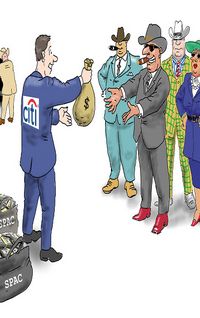Paving the future
Argentina rose from the ashes as a must-own asset class in 2017. But from an equity perspective, the lack of investible options posed a challenge – energy, including former state-owned oil champion YPF, made up 27% of the country’s benchmark Merval Index; utilities 26%; and financials 17%.
So investors were bound to be excited when Loma Negra, the Argentine unit of Brazilian-controlled cement conglomerate InterCement Group, offered some diversity with its US$1.1bn IPO.
It was the largest listing in the country since YPF went public in 1993 and the largest-ever cement IPO globally. The transaction was as significant to Argentina’s capital markets as it was to the parent company.
Loma Negra debuted on the NYSE/Merval on November 1, closing first-day trading at US$21.35/Ps75.55, roughly 12% above the offer price, which came at the top of a US$17–$19 per share marketing range.
“The whole discussion started with private equity firms, and after those discussions we decided to leapfrog to the public markets,” said Paulo Diniz, CFO of InterCement. “From there, we decided to go for a benchmark size, around a US$1bn offering, not only for Loma Negra but for Argentina.
“It was important for us to show that there was support for the local capital markets. It would have been much easier to do a NYSE listing [only].
“The key figures in the Argentine government do not need to work [in the government],” said Diniz. “They are entrepreneurs, industrialists, that decided to put their interests aside for the recovery of the country.”
Bank of America Merrill Lynch, Bradesco, Citigroup, HSBC, Itau, and Morgan Stanley led the deal, which was placed with 375 institutions.* Two-thirds of the shares were placed internationally via a book that was 12 times oversubscribed.
InterCement sold 90% of the shares, facilitating a 49% free-float including the subsequent exercise of the overallotment option.
Loma Negra, which controls 45% of the Argentine cement market, is using the proceeds to help fund expansion of its L’Alami cement plant, increasing capacity at the facility to 4.9m tonnes annually by 2020 from 2.2m tonnes.
President Mauricio Macri’s US$260bn, 10-year infrastructure investment plan means that future demand for cement in the country is expected to reach 15.1m tonnes in 2018 and 18m tonnes by 2022.
*Updates to include additional banks
To see the digital version of this review, please click here.
To purchase printed copies or a PDF of this review, please email gloria.balbastro@tr.com.


